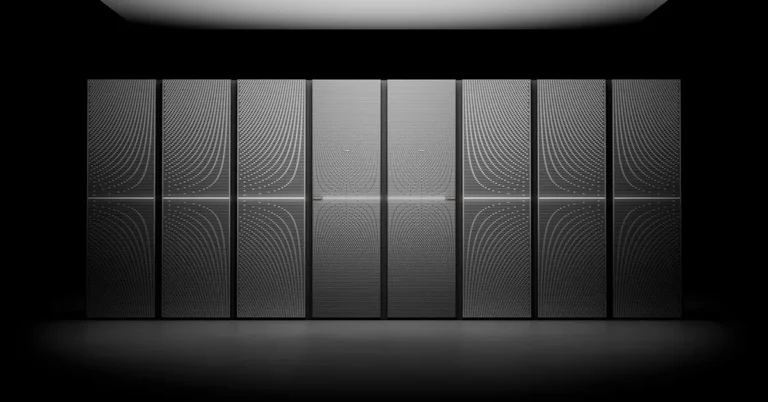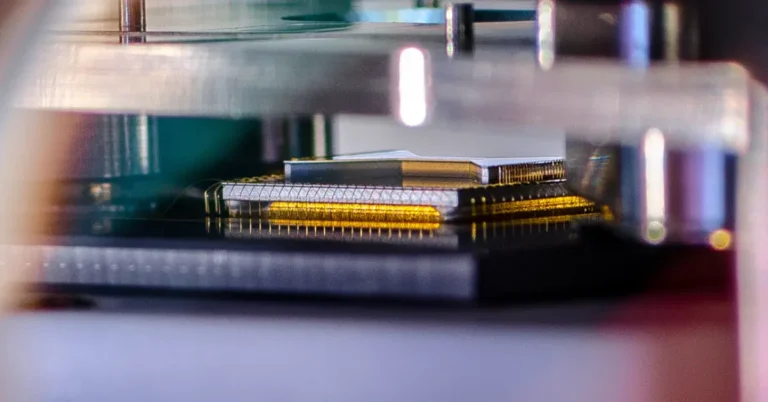Qubit
Quantum computing is one of the most exciting technological advancements of our time, and at its core lies the mysterious and powerful qubit. But what exactly is a qubit, and how does it differ from the bits in classical computers? Whether you’re a tech enthusiast or just curious about the future of computing, this guide will break it all down in a simple and engaging way.
Understanding Qubits: More Than Just Ones and Zeros
In classical computing, information is processed using bits, which can be either 0 or 1. A qubit, however, operates in a completely different way. Thanks to the principles of quantum mechanics, a qubit can exist in a superposition of both 0 and 1 at the same time. This ability makes quantum computers exponentially more powerful for certain tasks compared to traditional computers.
But how does this work? Imagine a light switch in a classical computer—it’s either on (1) or off (0). A qubit, however, can be like a dimmer switch, existing in an infinite number of states between fully on and fully off until it is measured.
How Qubits Work: The Power of Superposition and Entanglement
Two key principles define how qubits function:
Superposition: The Quantum Advantage
Unlike classical bits, which can only be in one state at a time, qubits can exist in multiple states simultaneously. Imagine flipping a coin—until you look, it’s both heads and tails at the same time. This property allows quantum computers to perform complex calculations at speeds impossible for classical systems.
Superposition is what enables quantum computers to tackle problems that would take traditional computers years, or even centuries, to solve. For example, in cryptography, a quantum computer can test multiple possible encryption keys at once rather than one by one, making it exponentially faster at breaking encryption.
Entanglement: Quantum Communication’s Secret Weapon
Entanglement is another mind-bending phenomenon where two qubits become correlated, no matter how far apart they are. When one qubit changes, the other reacts instantly. This property has huge implications for secure communication, cryptography, and even teleportation of information.
Einstein famously referred to entanglement as “spooky action at a distance.” The concept suggests that two entangled qubits share an invisible link that allows information to transfer instantaneously, even if the qubits are light-years apart. This is what makes quantum networks so promising for the future of ultra-secure communication.
What Makes a Qubit? The Different Types
Qubits can be created using various physical systems. Some of the most commonly used types include:
- Superconducting Qubits: Used by companies like IBM and Google, these are made from circuits that operate at extremely low temperatures.
- Trapped Ion Qubits: These use individual charged atoms trapped by electromagnetic fields.
- Photonic Qubits: These leverage light particles to store and process quantum information.
- Topological Qubits: A more theoretical approach that could lead to more stable quantum systems in the future.
Each type of qubit has its own advantages and challenges. Superconducting qubits, for example, are fast and relatively well-understood, but they require extreme cooling. Trapped ion qubits are highly stable but operate more slowly. Researchers are still exploring which type of qubit will be most viable for large-scale quantum computing.
Why Do Qubits Matter? The Real-World Impact of Quantum Computing
Quantum computers powered by qubits have the potential to revolutionize various fields:
- Drug Discovery: Simulating molecular interactions for faster pharmaceutical breakthroughs.
- Cryptography: Breaking traditional encryption but also creating unbreakable quantum-safe encryption.
- Artificial Intelligence: Accelerating machine learning processes.
- Optimization Problems: Solving logistics, financial modeling, and climate simulations at unprecedented speeds.
Imagine trying to develop a new drug to treat cancer. A quantum computer could analyze millions of molecular interactions in seconds, something that would take years using traditional methods. Likewise, financial institutions could use quantum computing to optimize investment portfolios in ways that classical computers simply cannot.
The Challenges of Working with Qubits
Despite their potential, qubits are incredibly fragile. Factors like temperature fluctuations, electromagnetic interference, and even cosmic rays can cause them to lose their quantum state, a problem known as decoherence. Researchers are working on error correction techniques and better qubit stability to make quantum computing practical for widespread use.
Error correction is a major hurdle. Because qubits can exist in multiple states at once, detecting and correcting errors is far more complicated than in classical computing. Scientists are developing quantum error correction codes that can stabilize qubits for longer periods, but the technology is still in its infancy.
How Close Are We to a Quantum Future?
Tech giants like Google, IBM, and startups worldwide are racing to develop scalable quantum computers. While we’re still in the early stages, advancements in quantum hardware and algorithms are rapidly accelerating. The question isn’t ifquantum computers will change the world, but when.
Currently, we have noisy intermediate-scale quantum (NISQ) computers that can perform limited quantum computations but aren’t yet powerful enough to surpass classical computers for most practical applications. However, researchers are making strides toward building fault-tolerant quantum computers, which could revolutionize industries within the next decade.
How You Can Get Started with Quantum Computing
Quantum computing isn’t just for scientists in lab coats. If you’re interested in learning more or even experimenting with qubits yourself, there are online resources available:
- IBM’s Quantum Experience lets users run quantum algorithms on real quantum processors via the cloud.
- Microsoft’s Q# programming language is designed for quantum computing.
- Google’s Quantum AI research team shares tutorials and open-source tools to help developers explore quantum computing.
Understanding qubits and how they work is the first step to grasping the immense potential of quantum computing. Whether you’re an aspiring researcher or simply a curious mind, keeping an eye on this evolving technology could prove to be one of the most exciting journeys of our time.
The Future of Qubits: What’s Next?
Qubits hold the key to unlocking a new era of computing. As research progresses, we may see hybrid systems combining classical and quantum computing for practical applications. The journey of qubits is just beginning, and their impact will be felt across industries in ways we’re only starting to imagine.





